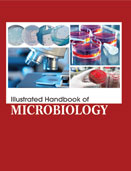Handbooks

This handbook provides an up-to-date review of the subject, gives an in-depth coverage of all aspects of microbiology. Microbiology is the study of microscopic organisms, such as bacteria, viruses, archaea, fungi and protozoa. This discipline includes fundamental studies in the biochemistry, physiology, cell biology, ecology, evolution and clinical aspects of microorganisms, including the host response to these agents. Recombinant DNA technology uses microorganisms, particularly bacteria and viruses, to amplify DNA sequences and generate the encoded products. Moving genes from one microorganism to another, or amplifying them within microorganisms, permits application of microbial skills to solve medical and environmental problems. Many microorganisms are unique among living things in their ability to use gaseous nitrogen from the air for their nutritional requirements, or to degrade complex macromolecules in such materials as wood.
Microbiology is the study of all living organisms that are too small to be visible with the naked eye. This includes bacteria, archaea, viruses, fungi, prions, protozoa and algae, collectively known as ?microbes?. These microbes play key roles in nutrient cycling, biodegradation/biodeterioration, climate change, food spoilage, the cause and control of disease, and biotechnology. Microbes can be put to work in many ways: making life-saving drugs, the manufacture of biofuels, cleaning up pollution, and producing/processing food and drink.
Illustrated Handbook of Microbiology provides an up-to-date review of the subject, with coverage including the physiology of bacteria, yeasts and molds. The impacts of microorganisms on our life may not be immediately obvious. But the truth is, microorganisms not only have a huge impact but are literally everywhere, covering all the surfaces of our body and in every natural and urban habitat. In nature, microorganisms contribute to biogeochemical cycling, as well as turnover of material in soil and aquatic habitats. Some are important plant symbionts (organisms that live in intimate contact with their host, with mutual benefit for both organisms) whereas others are important pathogens (organisms that cause disease) of both plants and animals. Other applications of microorganisms include industries like mining, pharmaceuticals, food and beverages, and genetics. Microorganisms are important model organisms for studying principles of genetics and biochemistry. Microbiology in everyday life contains association with water hygiene, food, health, industries, where microbes could be utilized. It is important for us to know about these minor organisms whose impact in our life is huge. In nature they contribute to the circulation of matter. Several foods are manufactured with the aid of microbes. They could be exploited in waste treatment in such a way that organic matter could be recycled. The Illustrated Handbook of Microbiology presents a comprehensive coverage of basic and clinical microbiology, including immunology, bacteriology, and virology. The book is particularly useful for students and researchers of microbiology, industrial microbiology, applied microbiology, biotechnology, bioprocesses technology and bioresources technology.